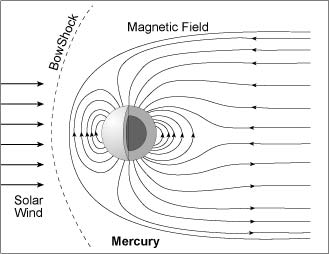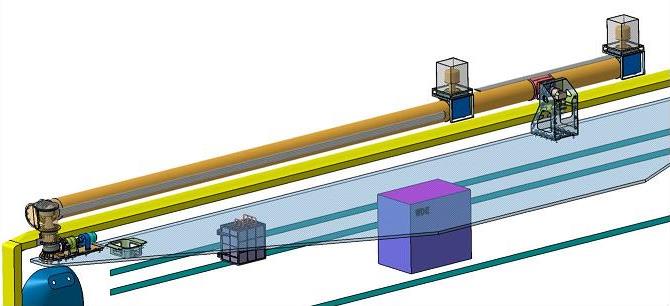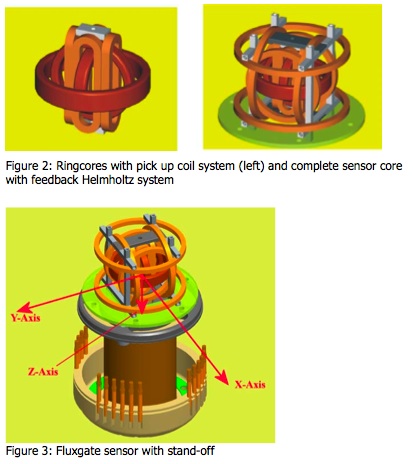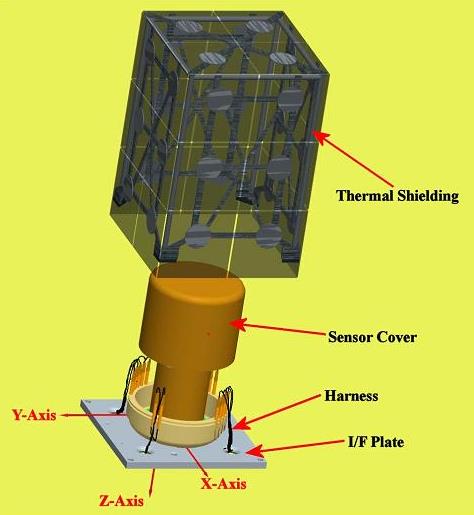MPO/MAG - BepiColombo
mPO-mag
Mercury magnetometer
MERMAG consists of magnetometers on board MPO and MMO: MPO-MAG and MMO-MGF. Some measurements are only possible using the magnetometers on both spacecraft. MPO-MAG is a dual digital fluxgate magnetometer, which shall be used to measure DC and low frequency perturbations of the magnetic field.

science goals
The primary objective of MERMAG is to provide the magnetic field measurements that will lead to the detailed description of Mercury's planetary magnetic field and its source. The goal is to contribute to the understanding of the origin, evolution and current state of the planetary interior.
This objective will be achieved using accurate magnetic field measurements by MERMAG on the low orbit BepiColombo Mercury Planetary Orbiter (MPO). It will be supported by measurements made on the Mercury Magnetospheric Orbiter (MMO), both to distinguish the effects of the Hermean magnetosphere on the MPO measurements and to use the MMO measurements directly to augment the database for the determination of the internal terms. With the data of MERMAG, it will also be possible to determine all the terms associated with the internal field up to the octopole with high accuracy as well as higher order terms, depending on the structure of the internal field.
The secondary objectives of MERMAG relate to the interaction of the solar wind with the Hermean magnetic field and the planet itself, the formation and dynamics of the magnetosphere as well as to the processes that control the interaction of the magnetosphere with the planet. In particular, measurements close to the planet will allow the determination of the conditions for access of the solar wind to the planetary surface and assessing the role and importance of different current systems, including subsurface induction currents and the conductivity of the regolith. These objectives will be greatly assisted by the planned close association with the magnetic field investigation on the MMO.
measurement principle
MPO-MAG is designed as follows: Two identical magnetometers are used each with their own dedicated electronics. This two sensors technique will be applied in order to help determine the magnetic influence of the spacecraft.
The instrument hardware comprises an electronics box, two sensor units with their associated thermal hardware and mechanical fixings, plus an electrical harness which connects the sensors to the electronics box. The sensors are mounted on a deployable boom, whilst the electronics box is located inside the spacecraft structure.

The boom is a critical subsystem both for the MPO-MAG instrument and the spacecraft. It enables both sensors to be slightly removed from the spacecraft; combining the signal from both the inboard and outboard sensors will help determine the magnetic interference from the spacecraft itself.
The MPO-MAG instrument is largely autonomous in operation, requiring a minimum of commanding only for selecting from a set of science operations modes and corresponding telemetry bit-rates. The two sensors measure the magnetic field with a sample rate of 128 Hz. These data will be reduced onboard to a lower temporal resolution depending on the instrument mode: 64, 32, 16, 8, 4, 2, 1, and 0.5 Hz.
  |
To achieve the prime goals, the separation of the measured magnetic field into its internal and external contributions is required. Almost complete coverage of the surface is required and also as many measurements above any given surface area as possible, which are needed to stabilize the inversion procedure and remove intervals that contain transient field structures due to magnetospheric processes.
LINK TO SCIENCE DATASETS - COMING SOON
LINK TO USER MANUAL
- Removed a total of (3) style text-align:center;
- Removed a total of (1) border attribute.
- Removed a total of (1) cellpadding attribute.
- Removed a total of (1) cellspacing attribute.









































 Sign in
Sign in
 Science & Technology
Science & Technology